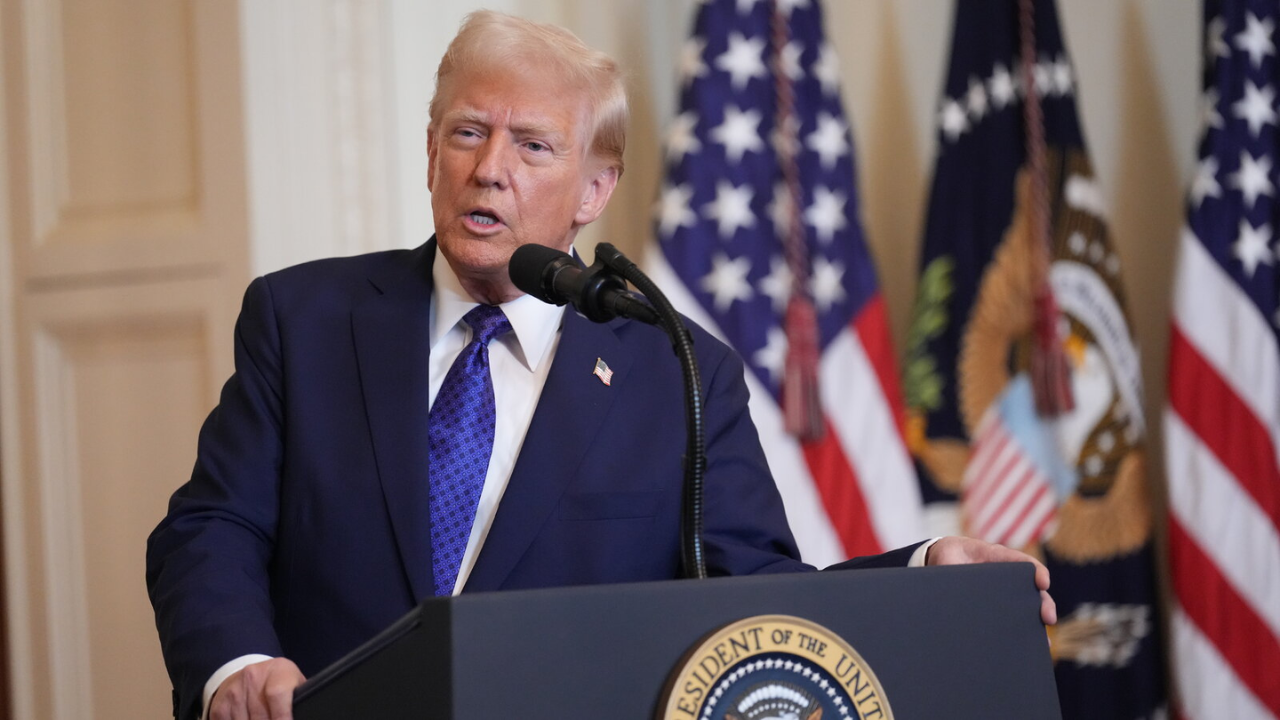Markets were rattled after President Trump’s new tariffs on Wednesday, fueling fears of a global trade war. Treasury yields, stock futures, and the dollar all plunged, signaling growing concerns about economic downturns.
This reaction isn’t just market panic. Thursday marked only the sixth time in history that the S&P 500 dropped more than 4% while the dollar simultaneously fell over 1%.
Typically, the dollar serves as a haven during market turmoil, making its decline even more alarming.
The worst may still be ahead. If this turns out to be the largest U.S. tax increase since at least the 1950s and it causes economic contraction, both stocks and Treasury yields could slide much further.
Recessions hit stocks in two ways: lower earnings and shrinking valuations as consumers cut spending and investors seek safer assets.
Defensive stocks, like those in food and household essentials, tend to outperform during downturns, while cyclicals—companies tied to discretionary spending, such as luxury goods and automakers—suffer.
Since the S&P 500’s peak in mid-February, investors have rapidly shifted away from cyclical stocks in favor of defensive ones.
A sector-based measure, which equally weights stocks to avoid distortions from megacaps, shows cyclicals underperforming defensives at levels not seen since the COVID-19 lockdown in March 2020.
Junk bonds, particularly the riskiest ones, have also been hit hard. The extra yield demanded by investors over Treasurys has surged by more than two percentage points.
The last time such a rapid spike occurred was in 2022, when economists widely expected a recession, though it never materialized.
Despite this, markets still aren’t fully braced for a downturn. The S&P 500 is only down 12% from its all-time high, returning to its September levels.
Historically, recessions tend to push stocks down at least 20%, erasing far more than seven months of gains. The index is still trading near 20 times forecasted earnings, which would likely be unsustainable if a recession takes hold.
Junk bonds tell a similar story. While the lowest-rated bonds have weakened, higher-rated junk remains largely unscathed.
Even the weakest bonds, rated CCC and below, have only returned to their September levels. In a full-blown recession, default risks would spike, and spreads could easily double, causing significant losses.
Looking deeper, stock options suggest the probability of a recession in the next year has risen to 15% from 10% before Wednesday’s tariff announcement, based on a Pimco model that assesses valuation risks.
Interest-rate derivatives place the chance of recession at 18%, reflecting expectations of rates falling below 1.75% in two years.
However, these measures aren’t foolproof. After the dot-com bubble burst, it took years for valuations to normalize, even with a recession. Tariff-driven inflation could also limit the Fed’s ability to cut rates if a downturn occurs.
Interestingly, Treasury yields haven’t fallen as sharply as one might expect. The 10-year yield is down 0.76 percentage points from its high earlier this year, but it has seen even bigger declines three times in the past two years. On two of those occasions, the drop eventually exceeded a full percentage point.
Typically, recessions lead to rate cuts of three points or more. If a recession becomes certain, yields would need to fall much further—unless stagflation ties the Fed’s hands. In that case, the economy, stocks, and corporate bonds could take an even greater hit.
For now, markets expect the Fed to overlook the tariffs and proceed with rate cuts, even if they push inflation higher.
While Fed Chair Jerome Powell may avoid calling this inflation “transitory” like he did in 2022, he might view tariffs as temporary disruptions—unless inflation expectations spiral out of control.
Markets seem to believe this is the case. The probability of a rate cut next month doubled to 24% after the tariff news, per CME FedWatch, and futures now expect three or more cuts by year’s end.
If tariffs remain at levels not seen since the infamous 1930 Smoot-Hawley Act, investors should prepare for steeper stock and bond declines.
However, those betting that global retaliation will be limited and that Trump will renegotiate may find comfort in current market levels. Still, they should be wary of how prolonged uncertainty could weigh on economic growth.
Disclaimer- Our team has thoroughly fact-checked this article to ensure its accuracy and maintain its credibility. We are committed to providing honest and reliable content for our readers.






